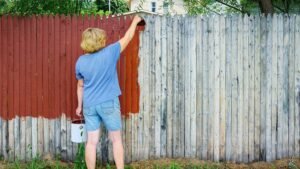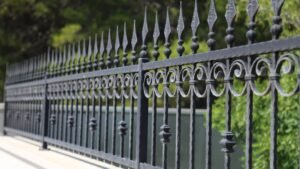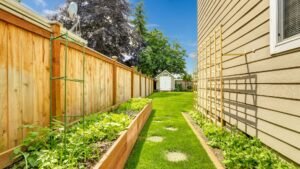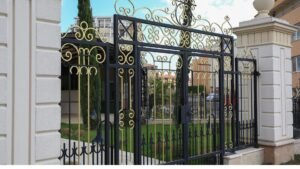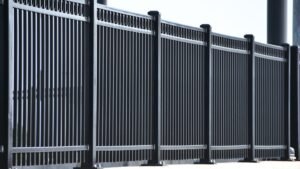Welcome to your complete guide on choosing the best wood for decks in New Zealand. Whether you’re planning to create the ultimate outdoor entertainment area or simply expand your living space, picking the right timber is crucial for both durability and aesthetic appeal. With New Zealand’s diverse climates, from humid coastal regions to cooler southern zones, finding the perfect decking material can be tricky. Should you go for native hardwoods like Kwila or more affordable options like treated pine? In this guide, we’ll walk you through the top wood choices available, key factors to consider, and how to maintain your deck so it stands the test of time. By the end, you’ll have all the knowledge you need to make an informed decision and build a deck that suits your lifestyle and environment perfectly.
The best wood for decks in New Zealand includes durable hardwoods like Kwila and Vitex, which are known for their resistance to weather and pests. For more affordable options, treated pine is popular for its availability and versatility, though it requires regular maintenance. Imported timbers like Jarrah and Merbau offer strength and longevity, ideal for high-traffic areas. When choosing the best decking timber, consider factors such as durability, maintenance needs, and climate suitability to ensure your deck lasts in New Zealand’s diverse conditions.
Table of Contents
Why Your Choice Of Decking Wood Matters For Your New Zealand Home
When planning to build or renovate a deck, one of the most critical decisions you’ll make is choosing the right wood. The type of timber you select will have a lasting impact on the look, feel, and longevity of your outdoor space. This choice doesn’t just influence the deck’s immediate appeal; it also determines how much effort and cost you’ll need to invest in maintenance over the years, and how well the deck will endure the challenges of New Zealand’s diverse climate.
Importance of Choosing the Right Wood
The wood you choose for your deck is more than just a design decision; it significantly impacts how long your deck will last and how much care it will need. Different types of wood have varying degrees of durability, meaning some are better suited for outdoor use, especially in areas prone to high moisture or harsh sunlight. For example, hardwoods like Kwila or Vitex are known for their toughness and resistance to rot and insect damage, making them ideal choices for a deck that can withstand New Zealand’s elements for decades. On the other hand, softwoods like treated pine are more affordable but may require more frequent upkeep and treatment to protect them from decay and pests. The wrong choice could lead to higher maintenance costs, repairs, or even replacement in just a few short years.
Additionally, the wood you choose also influences the overall appearance of your deck. Hardwoods typically provide a rich, natural finish with beautiful grain patterns that can age gracefully over time, adding to the charm of your outdoor space. However, these woods may darken or lighten, depending on exposure to sunlight, and some may require regular oiling to maintain their aesthetic appeal. Meanwhile, softwoods can be stained or painted to match your desired look but may require more frequent refinishing to keep them looking fresh.
Key Considerations: Weather Resistance, Durability, and Maintenance
New Zealand’s climate is known for its variability, with regions like Auckland experiencing high humidity and heavy rainfall, while areas like Dunedin can be much cooler and drier. This range of conditions makes it crucial to select a wood that can handle the specific environmental challenges in your area. For instance, if you live near the coast, choosing a wood that resists saltwater corrosion is vital. Timbers like Vitex are excellent for coastal homes, while those in rain-prone regions might benefit from Kwila, which is naturally resistant to moisture and decay.
Durability is another key factor to consider. Hardwoods generally offer greater strength and last longer under harsh conditions, whereas softwoods like pine may need protective treatments to achieve similar durability. Durability not only affects how long the wood will last but also influences how much time and money you’ll spend maintaining it. Hardwoods often require less frequent maintenance, making them a better long-term investment despite their higher initial cost.
Ease of maintenance is also something homeowners should weigh carefully. Some woods, particularly hardwoods, need periodic oiling or sealing to preserve their appearance and protect them from weather damage. Softwoods, while typically less expensive, may require more intensive maintenance, including treatment to prevent rot, pests, and mold. Understanding your willingness and ability to maintain your deck is essential when deciding which type of wood to use.
Eco-Friendliness and Sustainability
In recent years, sustainability has become a growing concern for many homeowners in New Zealand, and the choice of decking wood is no exception. Many are now looking for eco-friendly options that minimize environmental impact while still delivering the beauty and durability they expect from their outdoor spaces. Choosing timber that has been responsibly sourced, such as FSC-certified (Forest Stewardship Council) wood, can help ensure that your decking material comes from a sustainable forest management practice. Learn more about FSC-certified timber in New Zealand and its benefits.
Additionally, some native timbers or fast-growing softwoods like Macrocarpa offer a more environmentally friendly choice due to their availability and lower carbon footprint compared to imported hardwoods. For those who prioritize sustainability, it’s worth considering locally sourced or recycled materials, which reduce the environmental costs associated with transportation and deforestation.
By making an informed choice when selecting your decking wood, you’ll ensure that your deck not only enhances the look and value of your home but also stands the test of time, weathering New Zealand’s climate and requiring minimal maintenance, all while being mindful of environmental impact.

Key Factors To Consider When Choosing Decking Wood In New Zealand
When selecting the best wood for your deck in New Zealand, it’s essential to consider a few key factors that will ensure your deck stands the test of time and remains both functional and beautiful. The right timber choice can make all the difference in terms of durability, appearance, and long-term value. Let’s explore these factors in detail.
1. Durability
Durability should be at the forefront of your decision-making process, especially given New Zealand’s varied and sometimes harsh climate. With exposure to strong UV rays, frequent rainfall, and coastal humidity, decking wood must withstand these elements without warping, rotting, or fading too quickly. Hardwoods like Kwila and Vitex are excellent choices as they are naturally resistant to decay, termites, and moisture damage. For homeowners in wetter or coastal regions, choosing a highly durable timber is crucial to avoid frequent repairs or replacements down the line. Softwoods, such as treated pine, can also be used but typically require more maintenance to extend their lifespan.
2. Maintenance Needs
The amount of maintenance your decking wood requires is another crucial factor. Some timbers, especially dense hardwoods like Kwila, will need regular oiling to maintain their rich color and prevent the wood from drying out or fading in the sun. On the other hand, softwoods like treated pine need treatment to protect against moisture and pests. While hardwoods may initially seem like more work, their long-term resilience often means fewer structural issues over time. The key is to balance how much upkeep you’re willing to perform with the type of wood that suits your deck’s environment.
3. Aesthetic Appeal
Wood decking adds a natural charm to outdoor spaces, but it’s important to consider how the wood’s appearance will evolve. Some types of wood, like Vitex, start with a pale hue that naturally weathers to a silver-grey over time. Others, like Kwila, boast rich, reddish tones that deepen with age but require regular oiling to retain their color. If you’re looking for a specific aesthetic, consider how the timber will change with exposure to the elements. Your deck’s appearance will not only affect the overall look of your home but also your long-term satisfaction with the material.
4. Budget
Cost is always an essential factor in any home improvement project. The price of decking wood can vary greatly depending on the type of timber. Hardwoods like Jarrah and Kwila are more expensive but offer better long-term value due to their durability. Softwoods, such as treated pine, are more budget-friendly upfront but may require more frequent maintenance and replacement over the years. When budgeting, it’s important to consider not just the initial cost but also the long-term expenses related to maintenance and durability.
5. Availability in NZ
Finally, the availability of the timber in New Zealand can impact both the price and the timeline of your decking project. Native timbers like Vitex and Macrocarpa are readily available, making them a sustainable and often more affordable choice. In contrast, imported woods like Merbau and Jarrah may be harder to source, driving up costs and potentially delaying your project. Always check the availability of your preferred timber with local suppliers, as this can influence your decision.
By carefully considering durability, maintenance, aesthetics, budget, and availability, you’ll be well on your way to selecting the perfect wood for your deck in New Zealand.
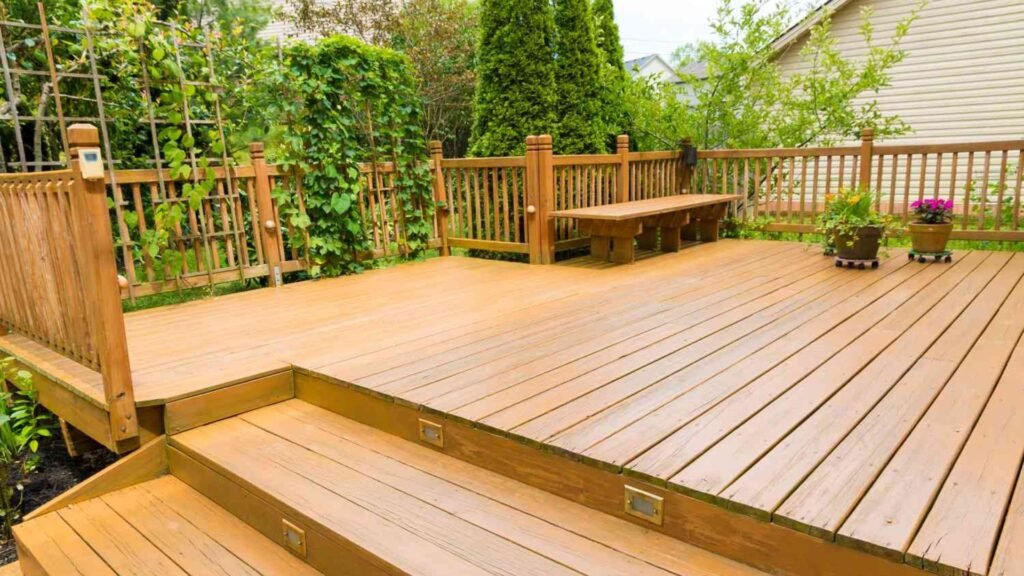
Best Types Of Wood For Decking In New Zealand
When it comes to decking in New Zealand, choosing the right type of wood is essential for durability, aesthetics, and long-term value. Different woods offer varying levels of resistance to the country’s diverse weather conditions, from the humidity of coastal areas to the cooler southern regions. In this section, we’ll explore the best native and imported timbers, as well as more affordable options like treated pine, to help you make an informed decision for your deck.
1. Native Timbers
Kwila
Kwila is one of the most popular choices for decking in New Zealand, and for good reason. This hardwood is incredibly durable, making it ideal for outdoor spaces that need to withstand heavy foot traffic and the elements. Kwila’s natural resistance to termites and weather damage is a key factor in its popularity, particularly in regions prone to moisture or pests. One of the appealing features of Kwila is its rich, reddish-brown hue, which adds warmth and character to any outdoor space. However, over time, Kwila will naturally weather to a silver-grey tone if left untreated. For those who prefer to maintain its original color, regular oiling is required. This not only preserves its appearance but also extends its longevity, ensuring that your deck remains in top condition for years to come. While it’s a premium option, Kwila’s strength and visual appeal make it a worthwhile investment for those seeking a high-quality deck.
Vitex
Vitex is another excellent native timber option for decking in New Zealand. Slightly less expensive than Kwila, Vitex offers many of the same benefits in terms of durability and weather resistance, making it a popular choice for homeowners. One of Vitex’s standout features is its pale, creamy color, which provides a more subtle and modern aesthetic compared to the darker tones of Kwila. This lighter color makes it a great option for those looking to create a sleek, minimalist outdoor space. Vitex is particularly well-suited to coastal areas, thanks to its natural resistance to saltwater damage. Like Kwila, Vitex does require oiling to maintain its color and protect it from the elements. If properly cared for, Vitex decking can last for many years, providing a beautiful and functional outdoor area.
Macrocarpa
For those looking for an eco-friendly decking option, Macrocarpa is a locally sourced softwood that offers a sustainable alternative to hardwoods. As a softwood, it’s less durable than options like Kwila or Vitex, but it’s a solid choice for homeowners on a budget or those who prefer a lighter, more natural-looking wood. Macrocarpa’s pale yellow hue gives it a rustic charm, and it can be stained or treated to enhance its durability. While it won’t last as long as hardwoods, with the right care and maintenance, Macrocarpa can still provide many years of service. It’s also a good option for those looking to minimize their environmental impact, as it is locally grown and widely available in New Zealand.
2. Imported Timbers
Jarrah (Australian Hardwood)
Jarrah is an imported hardwood from Australia, known for its strength and durability. With a rich, deep red tone, Jarrah adds a bold and luxurious feel to outdoor spaces, making it a favorite for high-end decks. It’s a tough wood that can withstand harsh weather conditions, heavy use, and exposure to the elements, making it a great choice for those who want a deck that will last for decades. Jarrah’s hardness means it’s resistant to rot, termites, and wear, but it comes with a higher price tag than many native woods. However, for homeowners looking for a deck that will stand the test of time with minimal maintenance, Jarrah is a fantastic option. Regular oiling will help preserve its rich color, but if left untreated, it will weather to a silver-grey over time.
Merbau
Merbau, another imported hardwood, is prized for its durability and resistance to pests and decay. This makes it an excellent choice for high-traffic areas, as it can handle heavy use without significant wear and tear. Merbau has a rich, reddish-brown hue similar to Kwila, and while it shares many of the same benefits, it’s generally more affordable. However, Merbau does have a high tannin content, which can cause staining, particularly during the first few months after installation, so it’s important to wash the deck regularly during this period to minimize staining. Like other hardwoods, Merbau requires regular oiling to maintain its color and durability. It’s a cost-effective alternative to Kwila that doesn’t compromise on strength or longevity.
Teak
Teak is the epitome of luxury when it comes to decking materials. This imported hardwood is known for its natural oils, which make it highly resistant to weather, moisture, and decay. Because of its unique properties, teak requires less maintenance than other types of timber and is often chosen by homeowners looking for a high-end, low-maintenance decking option. Its golden-brown color adds a sophisticated, timeless look to outdoor spaces, and it weathers beautifully to a silver patina if left untreated. While teak is one of the most expensive options available, its longevity and minimal maintenance requirements make it a popular choice for those who want a premium, long-lasting deck.
3. Treated Pine
Affordability and Availability
Treated pine is one of the most widely available and affordable options for decking in New Zealand. It’s a softwood that has been treated with chemicals to protect it from rot, decay, and pests, making it a cost-effective solution for those on a budget. While it doesn’t have the same natural durability as hardwoods, treated pine can still last for many years with proper care. One of the benefits of treated pine is that it can be stained or painted to mimic the look of more expensive timbers, giving you the flexibility to achieve the aesthetic you want without breaking the bank.
Maintenance
While treated pine is more affordable, it does require regular maintenance to ensure its longevity. This includes periodic re-treatment to protect it from the elements and prevent rot or pest infestations. Compared to hardwoods like Kwila or Jarrah, treated pine will need more frequent upkeep, but with proper care, it can still provide a long-lasting, attractive deck.
Eco-Friendliness
With the rise of sustainably sourced pine options, treated pine is becoming a more eco-friendly choice for decking in New Zealand. Many suppliers now offer pine that has been harvested from sustainable plantations, ensuring that your deck has a lower environmental impact. Additionally, because pine grows quickly, it is a renewable resource that’s more readily available, making it an excellent choice for those looking to reduce their environmental footprint.
Selecting the right wood for your deck in New Zealand depends on factors like budget, durability, maintenance, and aesthetics. Whether you choose a native hardwood like Kwila, an imported option like Jarrah, or a more affordable solution like treated pine, there’s a perfect wood for every deck.

How To Care For Your Wooden Deck In New Zealand
Wooden decks are a stunning addition to any outdoor space in New Zealand, but they do require consistent maintenance to ensure they stay in good condition, particularly with the country’s diverse and often challenging weather conditions. Below, we’ll outline a few key practices to help you properly care for your wooden deck, ensuring it not only looks great but also lasts for years to come.
Regular Cleaning
One of the most important and often overlooked steps in maintaining your wooden deck is regular cleaning. Over time, dirt, leaves, and debris can accumulate on the surface, potentially causing staining and even long-term damage. In humid or wet areas, which are common in many parts of New Zealand, regular cleaning is essential to prevent mold, mildew, and moss from building up.
We recommend sweeping your deck at least once a week, especially during wetter months, to keep debris from accumulating. For a more thorough clean, use a mild deck cleaner or a diluted mix of water and dish soap, gently scrubbing the surface with a soft-bristled brush. Be cautious when using high-pressure water, as this can damage the wood’s fibers. Cleaning your deck regularly will help preserve its natural beauty and prevent issues that can shorten its lifespan.
Oiling and Sealing
Oiling and sealing your deck is a critical part of its upkeep, especially if you’ve chosen a hardwood such as Kwila or Vitex. These woods, while naturally durable, still need protection from the harsh New Zealand sun and rain to prevent cracking, fading, and weathering. Oiling your deck every six to twelve months helps maintain its color and adds a protective layer against moisture.
Kwila, in particular, benefits greatly from oiling due to its natural oils that can dry out over time. When you notice that water no longer beads on the surface of your deck, it’s a good sign that it’s time to reapply oil. Be sure to clean the deck thoroughly and allow it to dry before applying the oil. Use a high-quality deck oil specifically designed for hardwoods, applying it evenly across the surface with a brush or roller. This will not only refresh the appearance of the wood but also protect it from UV damage and moisture, extending its life significantly.
Staining and Painting
While oiling works well for hardwoods, softwoods like treated pine often benefit from staining or painting to enhance both their appearance and durability. Staining adds color while still allowing the wood’s grain to show through, giving your deck a more natural look. Painting, on the other hand, provides a solid color finish and is often used to cover up imperfections in the wood.
Staining is a great option for those who want to highlight the wood’s natural features while providing protection against the elements. For softwoods like pine, staining is necessary to protect the wood from moisture absorption, which can lead to warping and splitting. Apply stain every two to three years, or as needed, depending on how exposed your deck is to sun and rain.
If you choose to paint your deck, opt for high-quality exterior paints designed for wooden surfaces, as these will provide better protection and durability. Painted decks often need less maintenance than stained or oiled decks but will require touch-ups to prevent peeling over time.
Seasonal Considerations
New Zealand’s weather can be harsh, from intense summer UV rays to heavy winter rains, and it’s important to prepare your deck for each season accordingly. During summer, the intense sun can cause wood to fade and dry out, making oiling or staining before the warmer months essential to protect the wood. Additionally, you can use outdoor rugs or add shade with umbrellas or pergolas to help protect your deck from direct sunlight, which will reduce fading and heat damage.
In winter, it’s all about protecting your deck from water and debris. Make sure your deck has proper drainage so that water doesn’t pool and cause the wood to warp or rot. Consider covering your deck during heavy rainfall to prevent waterlogging, especially if your deck is made from a softer wood like pine, which is more susceptible to moisture damage.
By regularly inspecting your deck for signs of wear and addressing issues early, you’ll keep your outdoor space looking fantastic, no matter what the season. Proper care will help your deck withstand New Zealand’s varying climates, ensuring it remains a beautiful and functional part of your home for many years to come.

Cost Comparison And Long-Term Value
When choosing the best wood for your deck in New Zealand, it’s important to consider not just the initial price of the timber but also the long-term costs associated with maintenance and durability. This section breaks down how different types of decking wood compare in terms of their initial cost versus their overall value, helping you make an informed decision that fits both your budget and your needs.
Initial Cost vs. Lifetime Cost
The upfront cost of decking materials can vary significantly depending on the type of wood you choose. For example, Kwila, a popular hardwood in New Zealand, tends to have a higher initial price. Its natural durability, weather resistance, and long lifespan make it one of the more premium options. However, because Kwila is highly resistant to rot and termites, the need for frequent repairs or replacements is minimal, which can save you money in the long run.
In contrast, treated pine is one of the most affordable woods available for decking. It’s widely used because of its low upfront cost, but it requires regular maintenance, including treatments to protect it from moisture and pests. While treated pine may be easier on your wallet initially, it can incur higher maintenance costs over time. You’ll need to invest in annual treatments and repairs, which adds up over the lifespan of the deck. Therefore, while the initial cost is lower, the lifetime cost—what you pay over time—might be higher due to more frequent upkeep.
Which Wood Offers the Best Long-Term Value?
When it comes to long-term value, hardwoods like Kwila and Jarrah tend to outperform softwoods like treated pine. Kwila, for example, may have a higher initial cost, but its dense grain and natural oils make it incredibly resistant to New Zealand’s harsh weather conditions, from rain to intense UV exposure. This means less frequent maintenance and fewer repairs, which contributes to its overall long-term value. The durability of hardwoods ensures that they last decades, often without needing to be replaced, making them a great investment despite the higher upfront cost.
On the other hand, treated pine may seem attractive due to its low cost, but because it’s a softwood, it’s more susceptible to warping, splitting, and damage over time. While regular treatments can extend its lifespan, it will still likely need to be replaced sooner than hardwood options. As a result, homeowners may find themselves paying for a new deck or significant repairs after a decade or two, which can diminish the value over time.
For those looking to strike a balance between cost and durability, Vitex is another option worth considering. It’s a mid-range hardwood that offers excellent resistance to weather and wear, while being slightly more affordable than Kwila. This makes it a good compromise for homeowners looking to get long-lasting quality without breaking the bank.
DIY vs. Hiring a Professional
Another important factor to consider when calculating the overall cost of your deck is whether you plan to install the deck yourself or hire a professional. Building a deck can be a rewarding DIY project, and doing it yourself can save you a significant amount of money on labor costs. However, this only applies if you have the right tools, skills, and time to complete the job correctly. Mistakes during installation, particularly with more expensive hardwoods, can end up costing you more in repairs or redoing parts of the deck.
Hiring a professional to install your deck will come with added costs, typically ranging from $100 to $200 per square meter, depending on the complexity of the project and the type of wood you choose. However, professional builders bring experience and expertise to the job, ensuring the deck is properly installed and likely to last longer. With hardwoods like Kwila, a professional installation can ensure the timber is laid correctly to prevent issues like warping or uneven wear.
If you opt for treated pine or another softwood, a DIY approach may be more feasible due to its lighter weight and ease of handling. However, because treated pine requires regular treatments and maintenance to extend its life, this also means more ongoing work if you’re handling the upkeep yourself.
The choice between DIY and professional installation depends on your budget, time, and experience. While doing it yourself can save money upfront, hiring a professional ensures a higher-quality, long-lasting result, particularly with premium woods. In the long term, professional installation may actually save you money by reducing the risk of costly repairs or early replacements.
When weighing up the costs of decking materials in New Zealand, it’s essential to think beyond just the price tag. Hardwoods like Kwila offer superior long-term value despite their higher initial cost, as they require less maintenance and last longer. Softwoods like treated pine may be cheaper upfront but will likely cost more in upkeep and may need replacing sooner. Additionally, your choice to DIY or hire a professional will impact both your budget and the quality of the final product.

Sustainability And Eco-Friendly Options For Decking In NZ
When building a deck, sustainability is an important consideration for many homeowners. Not only does choosing eco-friendly materials help reduce your carbon footprint, but it also supports responsible forestry practices and ensures the longevity of the environment for future generations. In this section, we’ll explore several options to help you build a beautiful, durable deck while minimizing environmental impact. From sustainably sourced timber to composite alternatives, here’s how you can make eco-conscious choices for your decking project in New Zealand.
Sustainable Sourcing
One of the most impactful ways to reduce the environmental footprint of your decking project is by opting for sustainably sourced timber. Look for wood that carries certification from the Forest Stewardship Council (FSC) or similar bodies, which ensure that the timber has been harvested in a way that promotes responsible forest management. FSC-certified wood comes from forests that meet high environmental and social standards, including biodiversity protection, worker rights, and forest regeneration.
By choosing FSC-certified timber, you’re not only ensuring that your wood has been harvested in an environmentally responsible manner, but you’re also supporting businesses that prioritize sustainability. In New Zealand, a variety of decking timbers, including Macrocarpa and Kwila, are available with FSC certification, making it easier for you to make a responsible choice without sacrificing quality or appearance.
Recycled Wood and Composite Options
In addition to sustainably sourced natural timber, another great eco-friendly option is using recycled wood products or composite decking. Recycled wood is made from reclaimed timber, often sourced from old buildings, fences, or other wood products that are no longer in use. By repurposing this wood for your decking, you’re preventing it from ending up in landfills and reducing the demand for freshly cut timber.
Alternatively, composite decking has gained popularity in recent years as a highly durable, low-maintenance, and environmentally responsible option. Composite decking is typically made from a combination of recycled wood fibers and plastic. These materials are blended to create a product that mimics the appearance of natural wood, without many of the drawbacks, such as susceptibility to rot or termites.
Composite decking also has the added benefit of being extremely long-lasting, reducing the need for frequent replacements, which further minimizes its environmental impact. Though it doesn’t have the authentic warmth and texture of real timber, composite materials are often a great choice for homeowners looking to prioritize sustainability and reduce long-term maintenance.
Local vs. Imported Woods
When considering the environmental impact of your decking materials, it’s important to weigh the pros and cons of locally sourced versus imported timber. Using locally sourced wood, such as New Zealand-grown Macrocarpa, can significantly reduce the carbon footprint associated with your project. Local timber requires less transportation, which means fewer emissions from shipping and a smaller overall environmental impact. Additionally, buying local supports the New Zealand timber industry, helping to create jobs and promote sustainable practices within the country.
On the other hand, imported woods, while often offering desirable properties like high durability or unique aesthetics, can come with a larger environmental cost due to the need for long-distance transportation. Woods like Merbau and Jarrah, while known for their strength and beauty, may travel thousands of kilometers before reaching New Zealand. This contributes to higher carbon emissions from fuel consumption during shipping and, depending on where the wood is sourced, could involve less rigorous environmental standards than those followed by local producers.
When weighing local versus imported options, consider not just the durability and appearance of the timber, but also its full environmental impact. In many cases, choosing locally sourced, sustainably harvested wood will provide you with a high-quality product while aligning with eco-friendly values.
By considering sustainability and eco-friendly options when selecting your decking materials, you can enjoy a beautiful, functional outdoor space while minimizing your environmental impact. Whether you opt for FSC-certified timber, recycled wood, composite decking, or locally sourced products, there are plenty of options to suit your style and budget. By making thoughtful choices, you’re not only enhancing your home but also contributing to a more sustainable future for New Zealand and beyond.

FAQs: About Best Wood For Decks NZ
What is the most durable wood for decks in New Zealand?
Kwila and Vitex are two of the most durable woods commonly used for decking in New Zealand. Both are hardwoods that naturally resist rot, termites, and weather damage, making them excellent choices for outdoor use.
Is treated pine a good option for decking in NZ?
Yes, treated pine is a popular and affordable option for decking in New Zealand. While not as durable as hardwoods, it can last for years with proper treatment and maintenance. It’s ideal for those on a budget and can be stained to mimic more expensive timber.
How does New Zealand’s climate affect my choice of decking wood?
New Zealand’s climate varies widely, from humid coastal areas to cooler, wet regions. If you live in a coastal area, woods like Vitex, which are resistant to saltwater damage, are ideal. For wetter climates, choosing timber that resists rot, such as Kwila, will be more important.
How often should I maintain my wooden deck?
Maintenance depends on the type of wood you choose. Hardwoods like Kwila require oiling every 6-12 months to retain their color and durability, while treated pine may need more frequent treatment to protect it from moisture and pests. Regular cleaning is also essential to prevent mold and dirt buildup.
Can I use composite decking as an alternative to wood in NZ?
Yes, composite decking is an increasingly popular alternative to wood in New Zealand. Made from a combination of recycled materials, it requires minimal maintenance and is resistant to weathering. However, it lacks the natural appearance and warmth of real wood.
What is the cost difference between hardwood and softwood decking?
Hardwoods such as Kwila and Jarrah are more expensive than softwoods like treated pine. While hardwoods have a higher upfront cost, they often last longer and require less maintenance, making them a good investment for long-term value. Softwoods are cheaper initially but may require more frequent upkeep.
How does wood age over time on a deck?
Most woods will fade or change color over time when exposed to the elements. For example, Kwila turns from a rich reddish-brown to a more muted silver-grey if left untreated. Regular oiling can help maintain the original color of your timber. Some homeowners prefer the weathered look that comes naturally with age.
Is it better to use locally sourced or imported timber for my deck?
Both locally sourced and imported timber have their advantages. Native woods like Vitex and Macrocarpa are more eco-friendly and support local industries, while imported woods like Jarrah and Merbau offer high durability and can be a better fit for certain climates. Your choice depends on budget, environmental concerns, and desired wood characteristics.
What is the most eco-friendly decking option available in NZ?
If sustainability is a priority, look for FSC-certified woods or eco-friendly options like Macrocarpa, which is locally grown and renewable. Composite decking made from recycled materials can also be a sustainable option, as it reduces the demand for virgin timber.
How do I protect my wooden deck from New Zealand’s harsh sun?
New Zealand’s high UV levels can cause wooden decks to fade and dry out. To protect your deck, apply UV-blocking oils or stains designed for outdoor timber. Regularly applying these treatments can extend the life of your deck and help it retain its natural color. Additionally, consider using outdoor rugs or providing shade with a pergola or awning to reduce direct sunlight exposure.
Conclusion
In conclusion, choosing the right wood for your deck is crucial to ensuring its longevity, aesthetic appeal, and ease of maintenance. By selecting a timber that suits your environment, budget, and lifestyle, you can create a deck that not only looks great but also stands the test of time against New Zealand’s unique climate. It’s important to weigh the pros and cons of each option, considering factors like durability and the level of care required to maintain the wood’s natural beauty. Consulting with local experts or suppliers can also help you make a well-informed decision tailored to your specific needs. As you embark on your decking project, feel free to share your thoughts or ask questions in the comments below, or reach out for further advice—your perfect deck starts with the right choice of timber.
About the Author:
Mike Veail is a recognized digital marketing expert with over 6 years of experience in helping tradespeople and small businesses thrive online. A former quantity surveyor, Mike combines deep industry knowledge with hands-on expertise in SEO and Google Ads. His marketing strategies are tailored to the specific needs of the trades sector, helping businesses increase visibility and generate more leads through proven, ethical methods.
Mike has successfully partnered with numerous companies, establishing a track record of delivering measurable results. His work has been featured across various platforms that showcase his expertise in lead generation and online marketing for the trades sector.
Learn more about Mike's experience and services at https://theleadguy.online or follow him on social media:


